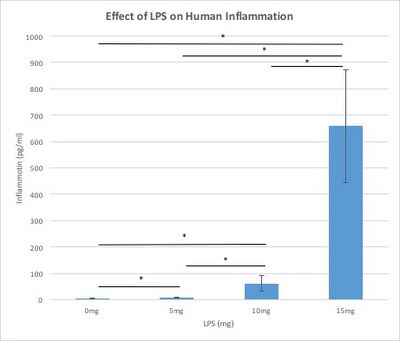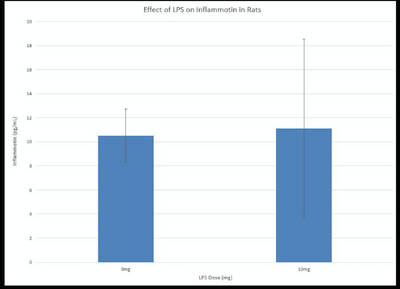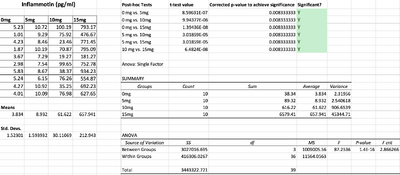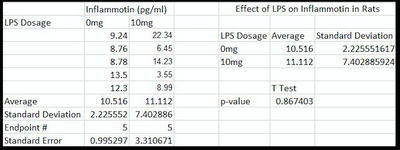BME100 s2016:Group8 W1030AM L2
| Home People Lab Write-Up 1 | Lab Write-Up 2 | Lab Write-Up 3 Lab Write-Up 4 | Lab Write-Up 5 | Lab Write-Up 6 Course Logistics For Instructors Photos Wiki Editing Help | |||||||
|
OUR TEAM
LAB 2 WRITE-UPDescriptive StatisticsHuman Test Subjects Inflammotin Mean:
Inflammotin Mean
Graphs
Analysis & Inferential StatisticsHuman Subject Study Rat Subject Study The results from the rat subject study are not statistically significant due to a p-value calculated to be greater than 0.05, as shown in the data above.
Summary/DiscussionWhile the human subject study proved to be statistically significant, the rat subjects study did not. It seems to appear that the drug produces some effect on inflammation in humans, while it does not correlate with any effect in rats. This result could be due to a variety of factors including: the sample size was larger in the human study than the rat study, giving more data to be evaluated, there were more groups with varying dosages of the LPG drug tested in humans than tested in the rats, again giving more data to be evaluated. |
|||||||




